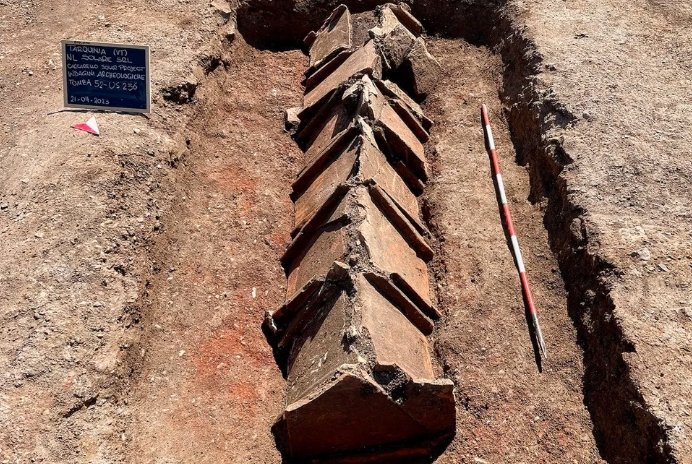For the first time, archaeologists have mapped an entire ancient Roman city without digging a single trench. Using ground-penetrating radar, researchers uncovered a lost world beneath the soil—one that has been hidden for more than a millennium.
A City Frozen in Time Beneath the Italian Countryside
Falerii Novi, a 75-acre city located 31 miles north of Rome, was once home to around 3,000 people. Established in 241 B.C. and abandoned in 700 A.D., the city contained a theater, a bathhouse, temples, shops, and a massive monument that has left experts scratching their heads. Despite centuries underground, the structures remain largely intact, revealing secrets of Roman urban life.
Archaeologists from the University of Cambridge and the University of Ghent spearheaded the project. Their findings, published in Antiquity, suggest this technology could revolutionize how ancient cities are explored.

How a Quad Bike Helped Unveil Ancient History
Mapping the city was no small feat. Researchers mounted an array of radar antennae onto a quad bike and drove across the site. This method allowed them to scan beneath the surface without disturbing the ruins.
- The radar system captured readings every five inches.
- By bouncing radio waves off underground structures, researchers pieced together a 3D map of the city.
- The process provided an unprecedented level of detail, exposing hidden streets, buildings, and water systems.
One of the biggest surprises? The city’s water system was built before the streets above it—an unexpected level of planning for the time.
A Monument Like No Other
Among the most intriguing discoveries was a public monument nearly 200 feet long. Lined with colonnades, it contained two smaller structures with niches for fountains and statues.
“What’s remarkable is that no one knows what it is,” said Martin Millett, a classical archaeology professor at the University of Cambridge. “We’ve never seen anything quite like it.”
This mysterious structure is believed to be linked to the cultural and religious practices of the Faliscan people, who lived in the area before Rome took control.
A Glimpse into Ancient Rome’s Urban Planning
Unlike Pompeii, which was buried under volcanic ash, Falerii Novi was simply abandoned and left to time. Its intact layout provides researchers with a rare opportunity to study Roman urban development on a grand scale.
Using traditional excavation methods, it would have taken decades to uncover the same level of detail. Millett believes this breakthrough could reshape archaeology, allowing entire cities to be mapped in their entirety—without ever breaking ground.














